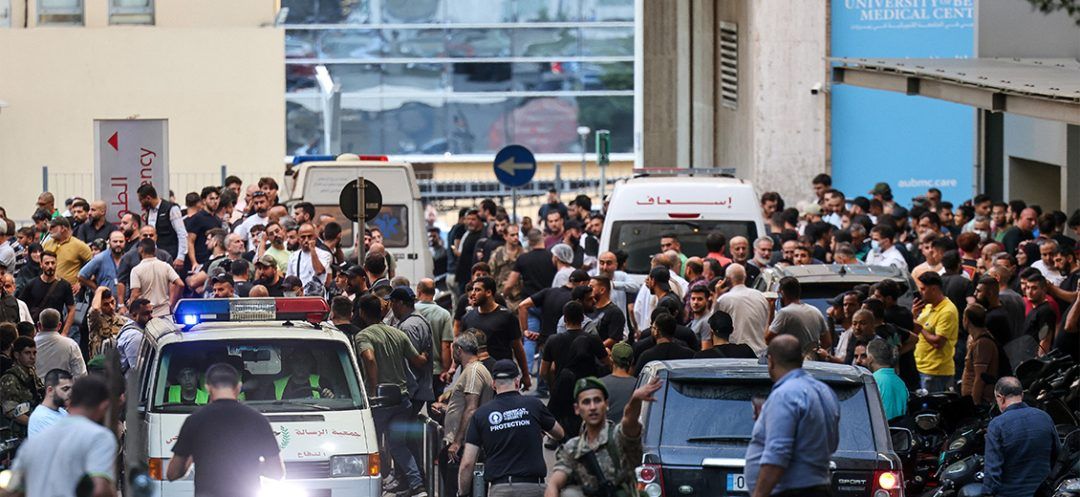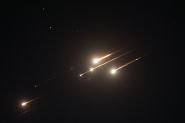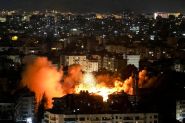- Home
- War in the Middle East
- The 17 September Attack: Taking the War to Another Dimension

An unprecedented strike that will surely be etched into the global history of warfare and precision-targeted military operations. The Israeli attack on 17 September likely involved electromagnetic pulses (EMPs) targeting the pagers used by Hezbollah's top leaders and elite fighters. The coordinated detonation of thousands of these devices across the pro-Iranian group’s operational zones, including Syria, underscored the sheer scale and complexity of the operation. Within minutes, the assault claimed the lives of at least a dozen individuals and left more than 4,000 Hezbollah members injured, 400 of them critically, according to an initial report by the Ministry of Health, which is expected to worsen in the coming hours.
The scenes of desolation in the streets and, most strikingly, in the hospitals — completely overwhelmed by the injured — evoked painful memories of the tragic events of August 4. However, unlike that catastrophe, this one did not result in the same widespread neighborhood destruction or civilian casualties. Drawing a perhaps dramatic comparison, Tuesday’s events could be considered a "Pearl Harbor" moment for Hezbollah, on Lebanon's smaller scale. The operation’s unexpected and striking execution, combined with its profound psychological impact on Hezbollah’s military apparatus and leadership, mirrors the shock and strategic blow of that infamous attack.
The 17 September attack marks a turning point in the war Hezbollah recklessly launched on the 8th of October, revealing a new dimension to the conflict. This "new dimension" lies in Israel's undeniable technological dominance and the extraordinary accuracy of its strikes. For over eleven months, Israel has carried out highly coordinated operations against Hezbollah’s leadership and fighters, leveraging advanced artificial intelligence and cutting-edge technology. Alongside these targeted strikes, Israel has also engaged in covert warfare, leading to the elimination of key Hezbollah leaders, including their top military commander, Fouad Shokr.
The strategic significance of the 17 September attack extends beyond its immediate impact. It demonstrated and validated reports from Western media suggesting that Israel has acquired formidable offensive capabilities, particularly in the realm of electromagnetic systems. The operation likely provided a preview of these advanced technologies, as experts believe the attack was executed using electromagnetic pulses, showcasing their devastating potential.
The immediate impact of Tuesday’s attack is particularly grave, as it specifically targeted and incapacitated around 4,000 Hezbollah mid- to high-ranking officials, as well as key frontline fighters. These thousands of pagers were clearly issued to crucial leaders and prominent combatants, delivering a severe blow to the heart of Hezbollah’s military chain of command. In the short term, this will deeply undermine trust in the militia's communication system, crippling its operational effectiveness and leaving its leadership shaken.
In a few minutes, and without engaging in any direct combat, the Israeli military inflicted a severe blow to Hezbollah. This was achieved without resorting to indiscriminate and deadly bombardments that cause widespread civilian casualties, a stark contrast to the daily violence seen in Gaza.
The key question now is how Hezbollah will respond to the attack. Israeli officials are hinting at the possibility of a significant retaliatory strike. However, one must consider whether this could be a strategic trap set by Israel to draw Hezbollah into a larger conflict. This escalation might be intended to justify further military action along the Lebanon border and address the issue of the 80,000 displaced persons currently in northern Israel.
Benjamin Netanyahu's government seems to be disregarding Washington's cautious recommendations. With the new American administration set to take office in January 2025, the pressing question is whether Netanyahu will continue to employ the 'technological dimension' of conflict, as evidenced by the September 17 attack, or whether he will opt for a more conventional approach. This latter option could involve a ground operation to occupy parts of southern Lebanon and establish a buffer zone to protect Israel’s northern border. Ironically, such a move could play into Hezbollah’s hands by enabling the group to revive its guerrilla tactics and reassert its role as a 'resistance' force — a central aspect of its identity and purpose, despite its recent ineffectiveness.
Read more




Comments